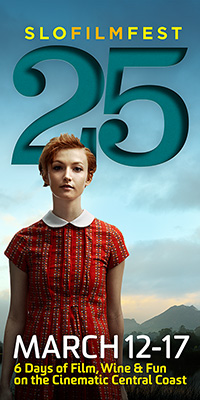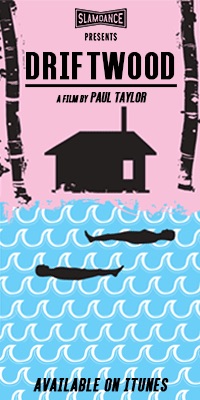For the first time since I moved to New York to work for Lincoln Center five or six years ago, I find myself going back to the Toronto International Film Festival. I hadn’t been there in all that time because timing made it impossible with my duties doing PR for NYFF. This situation happens when you work for film festivals as, schedule-wise, they often will conflict with another cool film festival. For example, I haven’t been to SXSW in all that time as well. We’ll see if that changes now that I’m out of NYC. But now that I am free from those constraints, I’m back at TIFF to do interviews for The Daily Buzz NPR podcast and reports for this column. Great!
Anyway, I get to Toronto and connect with film critic, programmer and buddy Robert Koehler, who was cool enough to share an Airbnb space with me, and manage to make it to the Bell Lightbox headquarters in time to get my credential just as they were closing for the day. This meant that I could catch one press screening for the evening, so I chose a film repped by my friend Thessa Mooij, RETURN OF THE ATOM.
RETURN OF THE ATOM
Directed by Mika Tania and Jussi Eerola, RETURN OF THE ATOM takes a look at the difficulties faced with the construction of the OL3 nuclear plant in Eurajoki, Finland. Hailed as a calling card for the return of nuclear power as a major source of energy for the world, the project immediately ran into problems that saw safety issues, cost overruns and a project that is now delayed by more than nine years from the original expectations for it to be online and operating. The film traces the heady beginnings of the project with the roadblocks, protests against its development, and continuing difficulties and delays. Tania and Eerola also interlace that narrative with vintage science films about the possibilities of nuclear energy, news footage from notable disasters, such as Chernobyl and Fukushima, and interviews from the people responsible for the project and activists that have long campaigned against it.
RETURN OF THE ATOM admirably does a thorough job providing historical and scientific context regarding the general subject of the safety of nuclear power versus its risks and a specific look into the complexities of this one particular plant and the community affected by it. However, there is oftentimes a tricky balance between “exhaustive” and “exhausting” when it comes to documentary subjects. And this is a film that would likely be better received by those that have a dedicated interest in the subject or that enjoy a “deep dive” into it as opposed to someone curious from a general interest perspective. Yes, it delivers a vital cautionary message regarding the continuing realities of releasing the nuclear genie from the bottle, but it doesn’t do so in the most accessible, easy-to-digest manner. Therefore, while I think the film would be well-received by wonks and those predisposed to have an interest in the subject, it might be tough going for the popcorn crowd.
Irene Cho, the Daily Buzz producer texts me that she has a ticket for the Opening Night Party with my name on it thanks to TIFF PR wonder girl and friend Nina Fotias, so I’m off to the Princess of Wales theater to grab it from her. Then, after a brief stop at a drug store to pick up a supply of five-hour energy drinks to get me through the week, I’m back to the Bell Lightbox to hit the party. It’s big and overdone in just the right way. (I mean this is the 40th Anniversary year for TIFF so you’re supposed to bring out the “good stuff”, right?) I don’t know anyone or recognize anyone, which is saying something for me in fest land by this point. Therefore, I entertain myself with their signature cocktails (“The Filmmaker” and umm…”The Stand In”, I think…or kinda remember..) and I sample every single food trinket dangled in front of me (Film Festival Dinner, I call it). Awesome! Finally, I unexpectedly run into director/producer/funny gal Joy Gohring who decided to come to TIFF to seek some more financing for a feature film she’s slated to start production on next Spring. We have rice krispies treats while she tries to get a bead on a CAA party since she’s a client. Before that happens, some girlfriends of hers show up and they are off to secret party rooms and I’m off to find Irene and compare notes for the next day.
Before turning in for the night, I had some screening homework to do to prepare for my first Daily Buzz interview the following day with the wonderful Australian director Gillian Armstrong. Another documentary, this one promised to be something completely different.
WOMEN HE’S UNDRESSED
Gillian Armstrong’s documentary WOMEN HE’S UNDRESSED profiles Orry-Kelly, a three-time Academy Award-winning costume designer who was responsible for some 285 films in his illustrious career. Yet, as accomplished as he was, winning Oscars for his work on AN AMERICAN IN PARIS, LES GIRLS, and SOME LIKE IT HOT, for example, he arguably does not have the name recognition or reverence that Edith Head has. The film seeks to remedy that and “introduce” us to the man by having an actor (Darren Gilshenan) play Orry-Kelly to narrate and lead us through the story of his life. Beginning in Australia, to humble beginnings in Hollywood rooming with an aspiring actor, named Archie Leach – soon to change his name to Cary Grant, to a rich and rewarding career as a major costume designer noted for a contentious working relationship with Warner Bros’ Jack Warner and a singular devoted relationship dressing Bette Davis, among many other stars. The film also delves into Orry-Kelly’s sexuality and what it meant to be gay in Hollywood during his heyday, accusations that Cary Grant worked to keep him from officially outing the star, as well as the art of costume design and what he brought to it during his time as a major player.
Armstrong’s choice to frame the film with Gilshenan’s performances as Orry-Kelly lends a fanciful and colorful proscenium arch to the life’s play we are visiting. It is both appropriate for the character that he was as well as adding a theatrical entryway to his story. The film succeeds on three fronts: As a fish-out-of-water success story of a man from Down Under making it in Hollywood; as a Hollywood Confidential look at the realities of being gay or lesbian before and then after the implementation of the Hays Code; and finally, as a loving and informative look at the art of costume designing for film. It’s to Arrmstrong’s credit that she is able to interweave what could be the makings of three separate documentaries into one coherent and entertaining one. The only people that I could see not enjoying the film would be hardcore cinephiles hoping for a clip-fest of old movie after old movie. Otherwise, with it’s style and the presentation of the information at hand, both the informed and uninformed should readily have fun as they learn about the life of Orry-Kelly.







READER COMMENTS